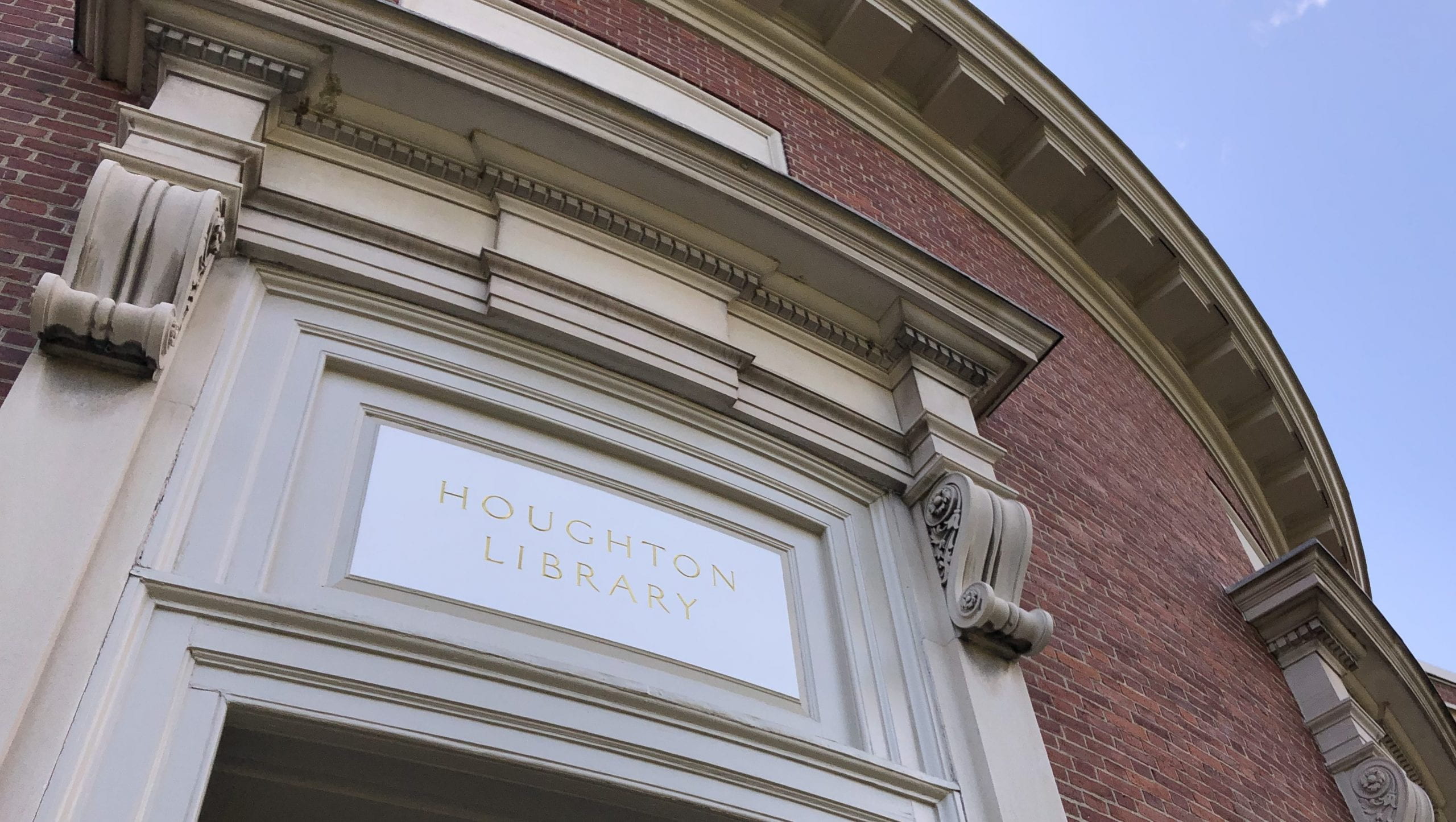By Lillianne Keaney, Horblit Project Cataloger, Houghton Library
The term “photograph” is actually quite broad. It encompasses black and white photographs (gelatin silver prints), chromogenic color prints, albumen prints, carbon prints, collodion prints, salted paper prints, digital photographs, palladium prints, daguerreotypes, and many others that are produced using different photographic processes (check out Graphics Atlas for more information on processes).
Just how important are the distinctions between the types of images? After all, a photograph is a photograph, right? While subjects can span the different processes, the proper identification of the type of photograph is important in the care and description of these images.
At Houghton Library, photographs are found in many of our collections, but the Harrison D. Horblit Collection provides glimpses of the beginnings of photography. This rare collection includes many very special images that help tell the tale of how photography was developed, especially in regards to the processes invented by the Englishman William Henry Fox Talbot (1800-1877). Talbot is credited as one of the inventors of photography and inventor of the negative to positive photographic process.
One of Talbot’s early successes in photography was the photogenic drawing (example: Two Leaves, below). Talbot would place something—such as a botanical specimen—on paper treated with sodium chloride and coated with silver nitrate. He would then expose the paper to light. The result was a light image of the object on a dark background. (For more information on salt prints, visit the website Salt Prints at Harvard.)

Talbot experimented with this process and even created photogenic drawings inside cameras, such as the early negative View of Sharingtons Tower at Lacock Abbey. The cameras that Talbot used are often called mousetrap cameras (a name given to them by Talbot’s wife, Constance). As you can see, the tower is light with a dark background and not very detailed, but the drawing still has the light image on a dark background.

The Horblit collection has a few images from this experimental time in Talbot’s life. While many of these early prints by Talbot fall into the typical look of a photogenic drawing, such as the images above, one early print in the collection—Botanical Specimen, Four Leaves—does not quite fit: the botanical specimens are dark, but the background is dark as well, not conforming to the typical look of early negatives or positive prints.

For much of their history, photographs were made by forming a positive image from a negative. However, early pioneers of the photographic process did not always see the benefits of this lengthy, two-step process. Like many of his contemporaries, Talbot sought to create a direct positive image. He succeeded in his efforts to create direct positive prints, which he called leucotypes. However, shortly after his success with the leucotype, he refined his negative to positive process with the invention of the calotype negative, whose shorter exposure times made the process less cumbersome. Because Talbot’s production of leucotypes lasted only days, these prints are incredibly rare.
So is Botanical Specimen, Four Leaves a leucotype? To create a leucotype, Talbot would expose treated paper to sunlight to darken and then wash it with potassium iodide. An additional exposure to light with an object on the paper caused the background to whiten (as noted by Larry Schaaf in Out of the Shadows: Herschel, Talbot & the Invention of Photography). For Botanical Specimen, the leucotype process could explain the dark leaves on a slightly lighter background. While it is not possible for me to say definitively, discussions with photograph conservators and observations of other direct positives by Talbot lead me to believe that this is likely a leucotype. If not, it may be an example of an experimental print Talbot made during his quest to invent a direct positive process. Further analysis will hopefully provide us with a more conclusive answer in the future. Stay tuned!
View more online images of Talbot’s work in the Harrison D. Horblit Collection of Early Photography.
View all digitized images in the Harrison D. Horblit Collection of Early Photography.
More images will be added regularly so check back often to see updates!
